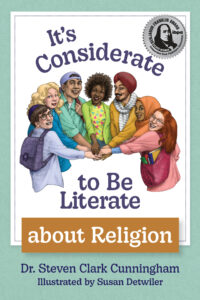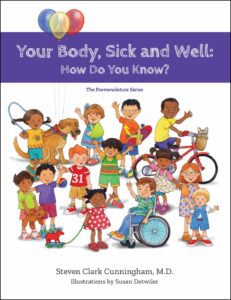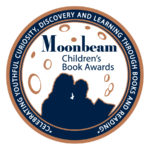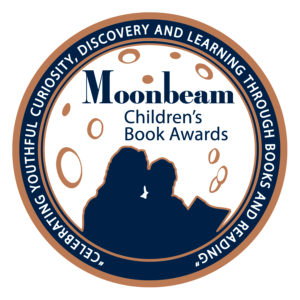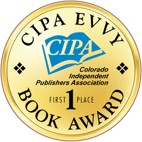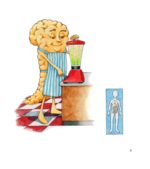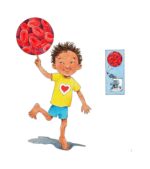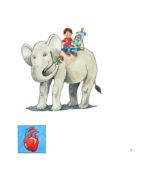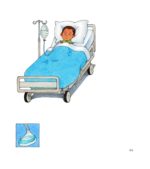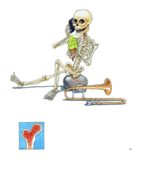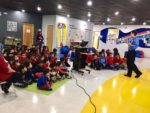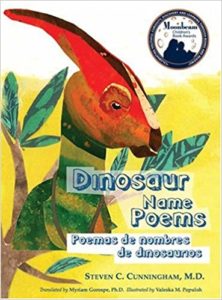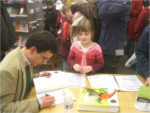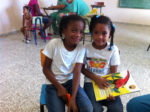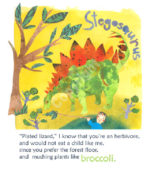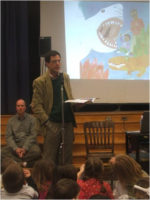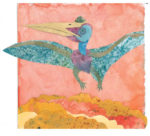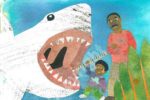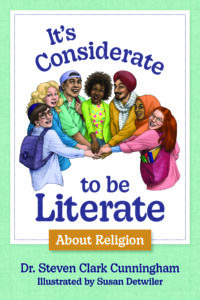Home
***Charitable proceeds: Author proceeds will be donated to organizations supporting children and religious literacy.***
It’s Considerate to Be Literate about Religion
Poetry and Prose about Religion, Conflict, and Peace in Our World
Written by Steven Cunningham
Illustrations by Susan Detwiler
Available discounted 25% now for preorder from Orange Hat Publishing, in hardcover and paperback (release date: November 15, 2022).
Winner of the 2023 Benjamin Franklin Award and First place in the Social Change category of the Next Gen Indie Book Awards, It’s Considerate to Be Literate about Religion is a book of nonfiction poems and prose for young readers, their parents, and their teachers. Along with Cunningham’s award-winning books Dinosaur Name Poems and Your Body Sick and Well: How Do You Know? this new book shares the motif of using the names of things (nomenclature) to introduce topics that otherwise may be unfamiliar, such as what it means to be religiously literate, the difference between the religious and the secular, or between a devotional approach to practicing a religion and an academic approach to studying religion, is full of helpful examples of all the various ways that we are sometimes religiously illiterate and how, by contrast, to be religiously literate.
The lyrical nature of the poems and the very engaging pencil illustrations by Susan Detwiler give each topic the traction needed to get youth (and adults) reading right into the poems and on through the expansive “Learn More!” sections that follow each poem.
In addition, a lively preface explains the joy of creating words, such as “poemenclature”; a helpful introduction welcomes readers to the concept of religious literacy; a fulsome glossary defines terms used in the book; and a reading group guide includes topics and questions for discussion and a section of suggested further reading.
Your Body Sick and Well: How Do You Know?
Written by Steven Cunningham
Illustrations by Susan Detwiler
Released in January 2020 from Three Conditions Press, this playful second book by Dr. Steven Clark Cunningham won 1st Place in the 26th Annual CIPA EVVY Awards Contest, sponsored by the Colorado Independent Publishers Association and also received the Gold Medal in the 14th Annual Moonbeam Award. It was also a Finalist in the 14th Annual National Indie Excellence Awards.
The book serves up a fun and healthy collection of bite-sized treats that both educate and entertain.
Following in the Jurassic footsteps of his award-winning book Dinosaur Name Poems, the current poems share the motif of using the names of things (nomenclature) to introduce topics that otherwise may be unfamiliar (as in the poem “Sphygmomanometer”) or even a little scary (like in “Cancer” or “Anesthesia”).
The lyrical nature of the poems and the vibrant warmth of the illustrations give each topic the traction needed to get kids reading right into the poems and on through the “Learn More!” sections that follow each poem. ***Author proceeds from the sale of Your Body Sick and Well: How Do You Know? go to charities supporting children’s physical and mental health!*** Check out the pre-release reviews by clicking the “Reviews” button above!
Specs: Soft Cover; ISBN: 978-0972124171; LCCN: 2019911633, $9.99
Availability: Ingram, Baker & Taylor, Amazon.com, BN.com, Books-A-Million, other retailers
Dinosaur Name Poems
Written by Steven Cunningham
Illustrations by Valeska Populoh
From Three Conditions Press, this 72-page, richly illustrated, bilingual (English and Spanish) collection of poems for young readers won the 2009 Moonbeam Award in both the “Poetry” and the “Spanish Language” categories.
Kids love to know what the dinosaur names mean: Tyrannosaurus Rex is “tyrant lizard king,” Stegosaurus is “plated lizard,” Oviraptor and Velociraptor are “egg thief” and “speedy, or swift, thief,” and my son’s favorite, Pachycephalosaurus, is “thick-headed lizard.” So each poem uses the name of a dinosaur (or other prehistoric beast) as a take-off or setting for the playful verse that follows.
The book includes a glossary of technical terms and preshistoric beasts. The accuracy of all text and illustrations was approved by Paleontologist Dr. Richard Kissel of the Paleontological Research Institution of Ithaca, NY.
Acknowledgment
We would like to thank Dr. Richard A. Kissel, Paleontologist and Director of Teacher Programs at the Paleontological Research Institution and its Museum of the Earth (Ithaca, NY), for reviewing and editing the content of the book for scientific accuracy.
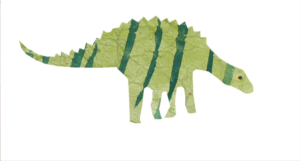
Dedication
For children – our future –
especially my children,
Lucas, Ana, Amaya, and Matteo,
especially Lucas Mario
who inspired this book,
and for my mother and my wife,
the two people to whom I owe the most
thanks.
Para los niños – nuestro futuro –
especialmente mis hijos,
Lucas, Ana, Amaya y Matteo,
sobre todo Lucas Mario
que me inspiró a escribir este libro,
y para mi madre y mi esposa,
las dos personas a quienes estoy más
agradecido.
-Steven C. Cunningham
Bios
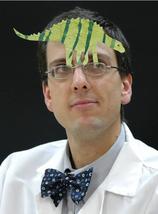
Dr. Steven Clark Cunningham was born in Denver, Colorado. After graduating from Creighton University with majors in chemistry and Spanish, he attended medical school at George Washington University in Washington, DC. Having finished his residency in general surgery at the University of Maryland and fellowships in research oncology and in surgery of the liver and pancreas at Johns Hopkins University, he currently works as Director of Pancreatic and Hepatobiliary Surgery and Director of Research at Saint Agnes Hospital in Baltimore, MD.
He has served as a contributing editor of Maryland Poetry Review and his poems have appeared in that journal. In addition, his work won the literary arts contest sponsored by the magazine The New Physician. His poems have also appeared in Chimeras, WordHouse Baltimore’s Literary Calendar, and in the anthologies Function at the Junction #2, Pasta Poetics, and Poems for Chromosomes.
Winner of the prestigious Benjamin Franklin Award in 2023, It’s Considerate to Be Literate about Religion: Poems and Prose about Religion, Peace, and Conflict in Our World is this third book of poetry. His first full-length book of children’s poetry, bilingual in English and Spanish, was Dinosaur Name Poems / Poemas de Nombres de Dinosaurios (Three Conditions Press, 2009), which won the 2009 Moonbeam Award in both the Children’s Poetry and the Spanish Language categories. His second book, Your Body Sick and Well: How Do You Know? (Three Conditions Press, 2020), was awarded 1st Place in Children’s Nonfiction at the 26th Annual CIPA EVVY Awards Contest, sponsored by the Colorado Independent Publishers Association, and a Gold Medal in the 14th Annual Moonbeam Awards. It was also a Finalist in the 14th Annual National Indie Excellence Awards.
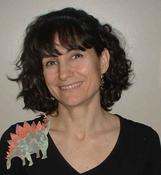
Dr. Myriam Gorospe was born in San Sebastian (Donostia), Spain. She received her Ph.D. from the State University of New York at Albany. She completed her postdoctoral training at the National Institutes of Health, where she studies genes (some of the same genes that dinosaurs might have had!). She has broad experience translating between English and Spanish, ranging from scientific and technical documents to poetry and literature.
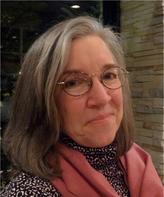
Susan Detwiler has illustrated several award-winning books for children, including After a While Crocodile, her sixth title for Arbordale Publishing. She is the author/illustrator of Fine Life For A Country Mouse, a picture book published by Penguin Random House in 2014. Her illustrations have appeared in the children’s magazines, Highlights for Children and Ladybug and her artwork has been used for puzzles, games, and greeting cards. Susan was educated at the Maryland Institute College of Art and she and her artist husband live in Baltimore. She is a volunteer member of the MD/DE/WV chapter of the Society of Children’s Book Writers & Illustrators.
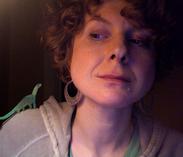
Valeska Maria Populoh grew up in a small town in Germany, immersed in storytelling and rituals. Tales of saints wafting through plumes of smoke in the cathedral blended together with mesmerizing puppet shows beamed in from Poland and the folktales her mother read to her from thick, brown tomes. The calendar was filled with community celebrations – lantern processions on St. Martin’s Day, annual eruptions of color and costume for Carnival… Her childhood was imbued with richness and color. When she moved to America as a young girl, she tumbled headlong into that perplexing terrain of not speaking a language and so improvising pantomime to communicate. Her best tools were picture books and a sticker album her teacher made for her, in which she recorded the words she learned. Art, music and gym class were her solace. From this grew a strong and abiding fascination with language, the power of the body and images to communicate without words, and a sensitivity to feelings of otherness, and the value of community. After years of nomadism, both geographic and professional, she now reside in Baltimore, Maryland, engaged in the community as a puppeteer, performer, artist, and teacher. Making art and illustrating dinosaurs is one part of this life, dedicated to celebrating creativity, making joyful, enriching and colorful experiences available and accessible to others, and supporting youth in their endeavor to find their own creative voice.
Press
- The JHU Gazzette October 19th, 2009
- GW Progress, October 2009
- The Buzz, November 2009
- The Dome, December 2009
- Creighton Magazine, December 2009
- Hopkins Medicine, January 2010
- CenterWide, January 2010
- University of Maryland Medicine Bulletin, Winter 2010
- Catonsville Times, February 2010
- GW Magazine, Spring 2010
- Writing and Illustrating, January 28th, 2020
- Press Release, November 2020
- TOTS Network: here, and here, December 2020
- Neighbors of West Ellicott City magazine, January 2021
- Neighbors of West Ellicott City magazine, May 2022
- Ascension Associate Spotlight in the ABIDE (Appreciation, Belongingness, Inclusivity, Diversity, Equity) Newsletter, October 2022
Videos
@steven.clark.cunninghamIs this how you ##TikTok? #acro ##acrobatics ##poetry ##EasyDIY ##books ##doctor ##wellnesstips ##fracture ##gift ##giftideas ##kids ##happyholidays♬ Mission impossible – The Spelding’s Jazz Orchestra
@steven.clark.cunninghamYay, anesthesia!!! ##TikTok ##2 ##anesthesia ##surgery ##poetry ##books ##doctor ##wellnesstips ##operation ##gift ##giftideas♬ original sound – Steven Clark Cunningham
@steven.clark.cunninghamI love ##dinosaurs on ##TikTok ! ##poetry ##kids ##books ##Spanish ##bilingual ##gift ##giftideas ##stegosaurus ##beardeddragon♬ Just Eat Plants – The Beach Road Band
@steven.clark.cunninghamI’m ##thankful 4 both! ##kidney & ##knee !##acro ##gymnastics ##poetry ##books ##doctor ##wellnesstips ##squid ##gift ##giftideas ##medical ##education ##4 ##kids♬ BOOM – Tiesto
@steven.clark.cunningham##skateboarding – ##better to ##pump than to ##spill ##blood – ##skating is ##poetry ##books ##doctor ##wellnesstips ##gift ##giftideas♬ original sound – Steven Clark Cunningham
@steven.clark.cunningham##intestines ##give ##food ##digestion ##TikTok ##acro ##acrobatics ##gym ##gymnastics ##poetry ##books ##doctor ##wellnesstips ##fracture ##gift ##giftideas ##surgeon♬ Body – Megan Thee Stallion
Events
Current/Upcoming Poetry and Religious-Literacy Events
- Presentation: “Religious Literacy for Healthcare Providers,” available on Asension’s Interprofessional Continuing Education site, free for Ascension associates and for a fee for nonassociates, recorded presentation.
- School visit: Burtonsville, TBA.
- Presentation: Hindu Mandir, Columbia, MD, TBA.
- Presentation: “Religious Literacy,” YMCA Senior Prime Time, June 28th, 2024, 10:30 AM, Catonsville, MD.
- Panel Discussion: July 10, 2024: Conversations on Cancer—Exploring Religious Literacy and Spirituality in Cancer Care. Free and open to the public: Register Here.
Past Events
- Presentation: “Burnout and Spiritual Distress: The Role of Religious Literacy,” Annual Chaplain Training Armed Forces and Federal Ministries, April 23, 2024, Claggett Center, Adamstown, MD
- Presentation: “Religious Literacy,” guest lecturer in bioethics, Mullen High School, May 25th, 2024, Denver, CO.
- Presentation: “The Spiritual Care of Patients (and Each Other): Religious Literacy for Chaplains,” Michael E. DeBakey Department of Veterans Affairs Medical Center, special presentation for Spiritual-Care Week, October 25, 2023, Houston, TX, virtual.
- Presentation: “The Spiritual Care of Patients (and Each Other): Religious Literacy for Healthcare Providers,” Ascension Saint Agnes Hospital Grand Rounds, October 12, 2023, Baltimore, MD.
- Interview and Group Discussion: “Health and Faith: Considering the Center of Wellbeing,” in Partnership with Interfaith America, Chautauqua Institute, July 10-11, 2023, Chautauqua, NY.
- Workshop: “Religions Literacy for Chaplains,” Association of Professional Chaplains 2023 meeting, June 22-25, 2023, Houston, TX.
- Book fair: Lansdowne Woods Book Fair Saturday, June 24 10 am-4 pm, LWVA Clubhouse, 19375 Magnolia Gr. Sq., Lansdowne Woods, VA.
- Presentation: “Spiritual Care and Religious Literacy,” GWish ISPEC course, June 23, 2023, George Washington University, Washington, DC.
- Presentation: “A Discussion of Religious Literacy for Healthcare Providers,” MMDA Hot Topics in Long-Term Care, May 15, 2023, virtual.
- Presentation: “The Spiritual Care of Patients (and each other),” National Care Management Team, Ascension, April 13, 2023, virtual.
- Presentation: “Religious Literacy for Healthcare Providers,” 12th Annual Collective Soul Symposium (themed “Serving Those in Suffering: Spiritual Care in Our Daily Practice,” The University of Texas MD Anderson Cancer Center, April 1, 2023, Houston, TX.
- Presentation: “Religious Literacy for Healthcare Providers,” Asension’s Spritual-Care Research Journal Club, February 2, 2023, 11:30-12:30 CST; 12:30-1:30 EST, virtual.
- Presentation: “Religious Literacy for Chaplains,” Ascension Clinical Pastoral Education curriculum, November 29, 2022, virtual.
- Discussion: “Religious Literacy: Religion, Peace, and Conflict in Our World,” November 20, 2022, American Academy of Religion, Denver, CO.
- Official book-release date: Tuesday, November 15, 2022, Waukesha, WI.
- Book Launch & Celebration…
- In person on the November 12, 2022, Doc Taylor’s Toy Emporium, November 15, 2022, Ellicott City, MD
- Virtual via Google Meet on November 13, 2022
- Webinar: “Religious Literacy for Chaplains and Other Healthcare Providers,” November 1, 2022, at the Chaplaincy Innovation Lab of Brandeis University.
- Presentation: “Religiously Literate: Becoming a Good Religious Neighbor,” October 9, 2022, Saint John’s Episcopal Church, Ellicott City, MD.
- Signing: Saturday, March 12, 2022 from 1pm-3pm, SweetFrog frozen yogurt in Laurel, MD.
- Signing: Saturday, March 5, 2020 from 1pm-3pm, SweetFrog frozen yogurt in Laurel, MD.
- Signing at book festival: “Eat Local, Read Local” October 10, 2021 from 11:00am-2:00pm, at Cascades Library in Loudoun County, Virginia.
- Signing: Saturday, February 15, 2020 from 12pm-2pm, SweetFrog frozen yogurt in Laurel, MD.
- Signing: Saturday, February 15, 2020 from 3pm-5pm, SweetFrog frozen yogurt in Woodmore (Lanham), MD.
- Signing: Saturday, February 22, 2020 from 12pm-2pm, SweetFrog frozen yogurt in Shrewsbury, PA.
- Signing: Saturday, February 22, 2020 from 3pm-5pm, SweetFrog frozen yogurt in York, PA.
- Signing: Saturday, March 28, 2020 from 12pm-2pm, SweetFrog frozen yogurt in Rosedale, MD.
- Signing: Saturday, March 28, 2020 from 3pm-5pm, SweetFrog frozen yogurt in Dundalk, MD.
- Signing: Saturday, April 4, 2020 from 12pm-2pm, SweetFrog frozen yogurt in Timonium, MD.
- Signing: Saturday, April 4, 2020 from 3pm-5pm, SweetFrog frozen yogurt in Catonsville, MD.
- RELEASE OF NEW BOOK! Your Body Sick and Well: How Do You Know? was released by Three Conditions Press January 2020.
- Signing at book festival: Fourth Annual “Eat Local, Read Local” event September 12, 2019, Cascades Library, Loudoun County, VA
- Signing:Saturday, November 24, 2018 from 1pm-3pm, SweetFrog frozen yogurt in Timonium, MD.
- Signing: Saturday, November 24, 2018 from 4pm-6pm, SweetFrog frozen yogurt in Dundalk, MD.
- Signing at book festival: Third Annual “Eat Local, Read Local” event, September 22, 2018, Cascades Library, Loudoun County, VA
- Signing at book festival: YABBA FEST a celebration of books, authors, music, arts, and theatre, October 14, 2017 in downtown Warrenton, VA.
- Signing at book festival: Second Annual “Eat Local, Read Local” event, October 7th, 2017, Cascades Library, Loudoun County ,VA.
- Reading and signing: Teen Book Festival at the Barnes and Noble, June 10-12, 2017, in Frederick, MD.
- Reading and signing: Tarbiyah Academy, February 28th, 2017, reading from Poemenclature: Poems About Your Body, for the students of Tarbiyah Academy, Elkridge, MD.
- Reading and signing, Tarbiyah Academy’s Scholastic Book Fair Tuesday, March 15, 2016, 10:00 AM, reading from Dinosaur Name Poems, for the students of Tarbiyah Academy, Elkridge, MD.
- Reading and signing: Bryant Woods Montessori Children’s House, Columbia, MD, October 18, 2012
- Reading and signing: Hillcrest Elementary School, Catonsville, MD, For the children, parents, and community of Hillcrest Elementary on Frederick Road in Catonsville, Math and Science Night: April 17th, 2012, 7 pm.
- McDonogh School, Owings Mills, MD, December, 12, 2011
- Barnes & Noble Holiday Book Fair for Reisterstown Elementary School, December 4, 2011, 2-4 pm
- Barnes & Noble, Pikesville, MD, October 8, 2011, 10 am
- McDonogh School, Owings Mills, MD, September 28, 2011, 3:15 pm
- INTERVIEW by Corinne Frontiero of Michigan Literary Network & Motown Writers Network on blogtalkradio.com, April 13, 2011, 5:15 pm
- Linwood Center Boutique, Ellicott City, MD, May 22, 2:00 pm
- INTERVIEW by Sharon Jenkins (TheMasterCommunicator) “Let’s Talk About My Book!”, November 17, 2:00 pm
- Barnes & Noble, Ellicott City, MD, Saint John’s Elementary School Book fair at Barnes & Noble, November 30, 2010, 7:00 pm
- McDonogh School, Owings Mills, MD, November 19, 2010, 2:30 pm
- McDonogh School, Owings Mills, MD, November 10, 2010, 2:15 pm
- Enoch Pratt Free Library, SE Anchor Branch, Baltimore, MD, October 28th, 2010, 12:30 pm
- Reading and signing at Red Canoe Bookstore, Baltimore, MD, October 2, 2010, 2:30 pm
- Signing at Community College of Baltimore County Children’s Learning Center, Catonsville, MD, September 16, 2010
- Signing at Barnes & Noble, Towson, MD, August 7, 2010, 11 am
- Community College of Baltimore County Camp Heritage, Catonsville, MD, July 23, 2010, 2 pm
- Reading and signing at The Book Escape, Baltimore, MD, July 10, 2010, 12 pm – 4 pm
- Barnes & Noble, Pikesville, MD, June 19, 2010, 10 am
- Children’s Bookstore, Roland Park, MD, May 5, 2010
- Johns Hopkins Hospital Child Life, YOU TUBE VIDEO – The Family Resource Center Library, to celebrate National Library Week, Baltimore, MD, April 6, 2010
- INTERVIEW by NormGoldman of Bookpleasures, December 29, 2009.
- Baltimore Book Festival, Baltimore, MD, Sunday, September 27th, 2009
- Awards ceremony at West Virginia Book Festival, Charleston Civic Center, Charleston, WV
- Community College of Baltimore County Children’s Learning Center, Catonsville, MD, Thursday, July 16, 2009
- Community College of Baltimore County Camp Heritage, Catonsville, MD, Friday, July 10, 2009
- Hillcrest Elementary School, YOU TUBE VIDEO, Catonsville, MD: February 24th, for the children, parents, and community of Hillcrest Elementary on Frederick Road in Catonsville, MD
Samples
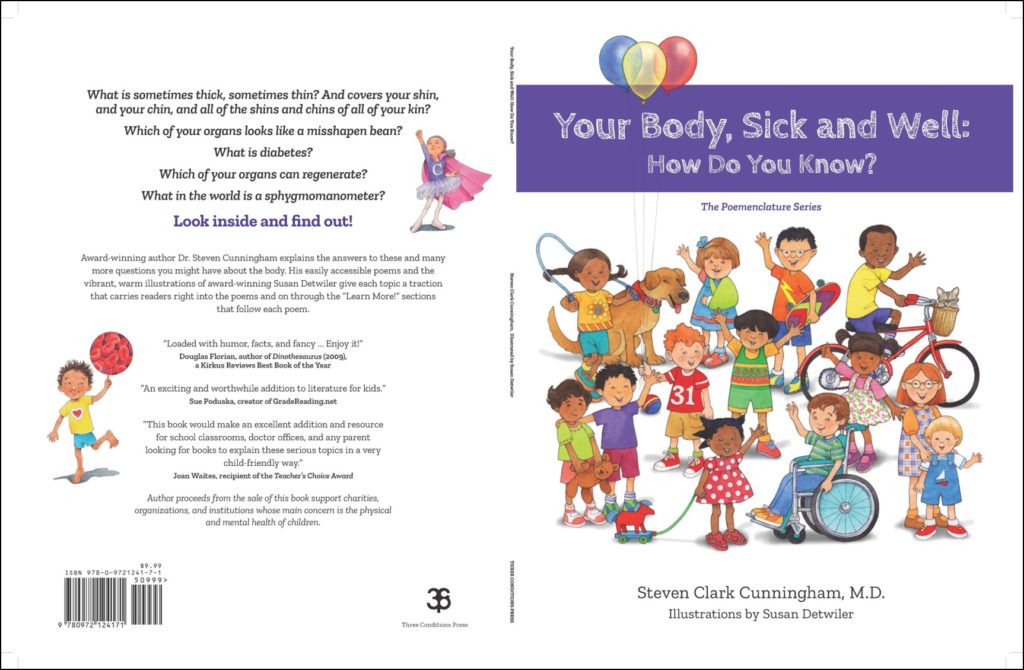
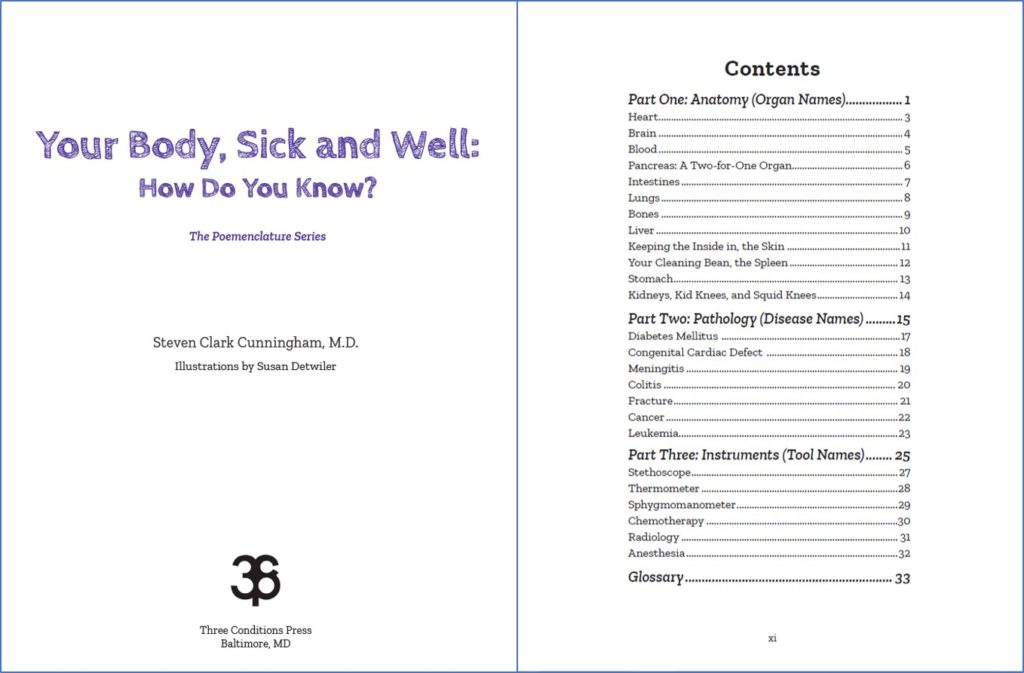
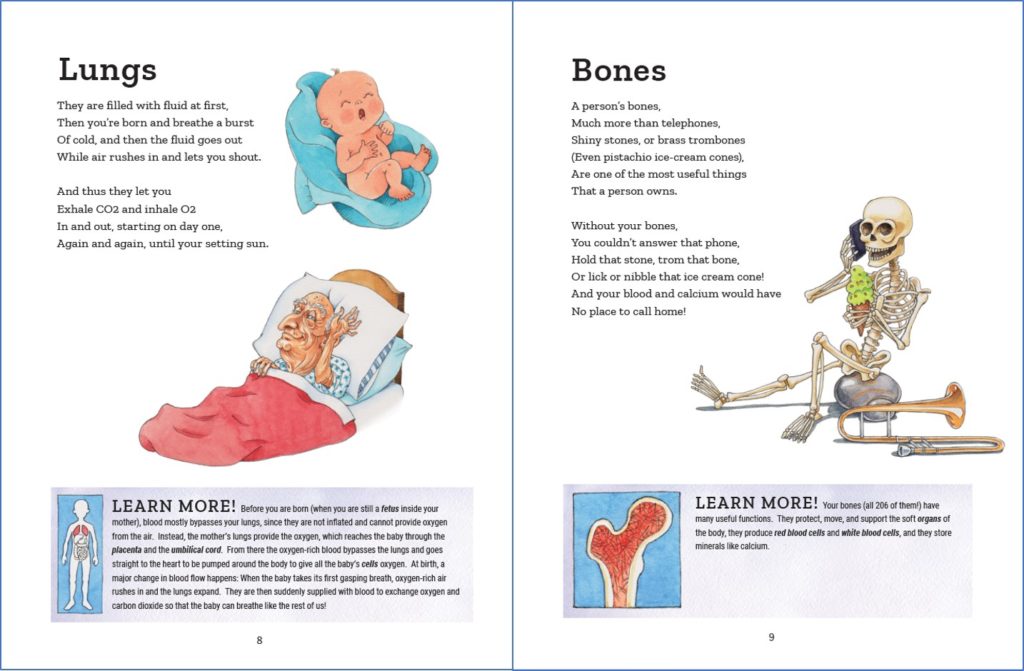
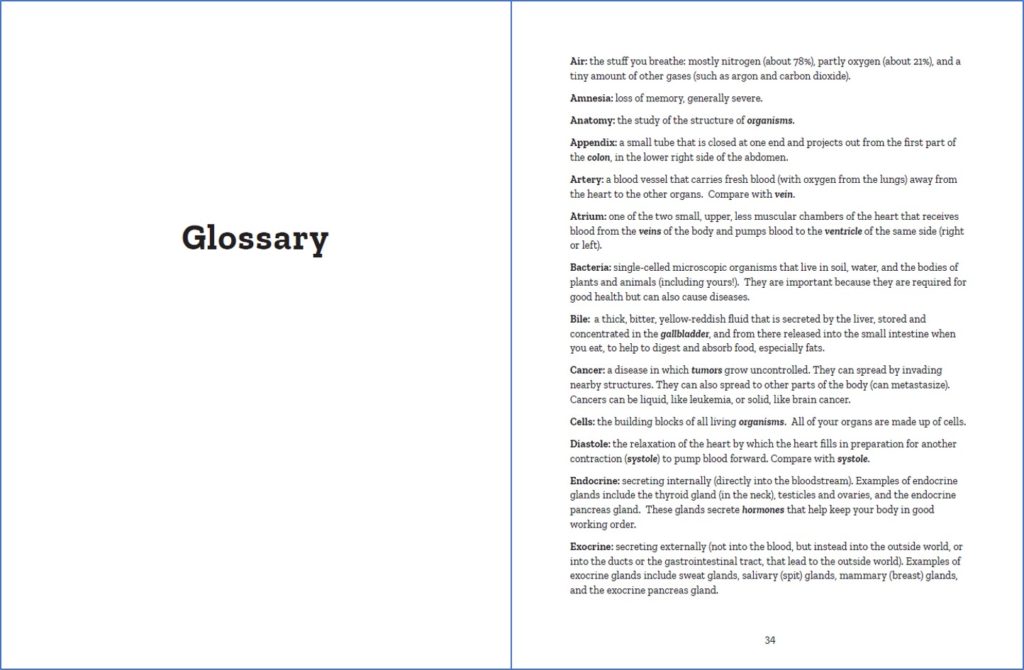
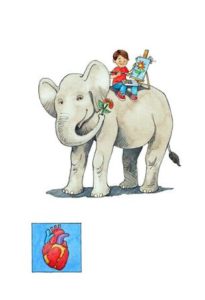 Heart
Heart
300 liters per hour
Is the blood-pumping power
Of the human heart
Which feeds your brain
To make you smart
Enough to paint a flower.
Learn More! Your heart is about the size of your fist. As you get bigger so does your heart, and it slows down. A baby’s resting heart rate is 120 beats per minute. A seven-year-old’s is 90 beats per minute, while an adult’s heart beats about 70 times per minute. A mouse’s heart beats 600 times per minute and an elephant’s heart only 30 beats per minute.
========================================================
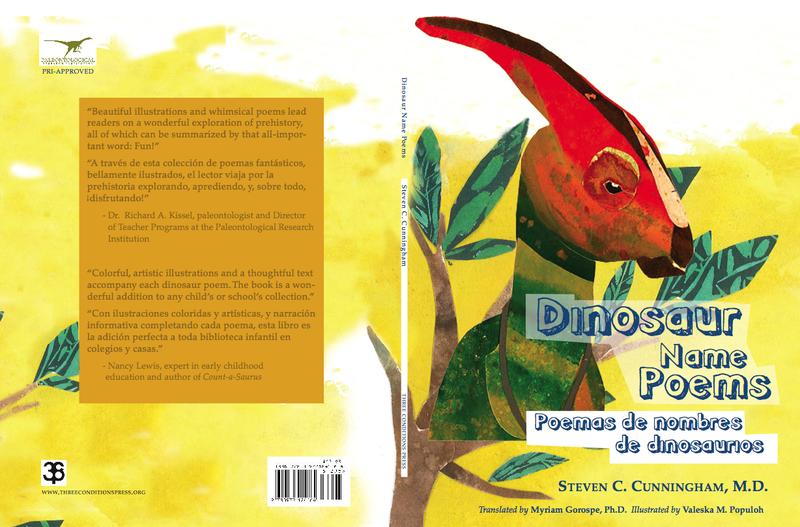
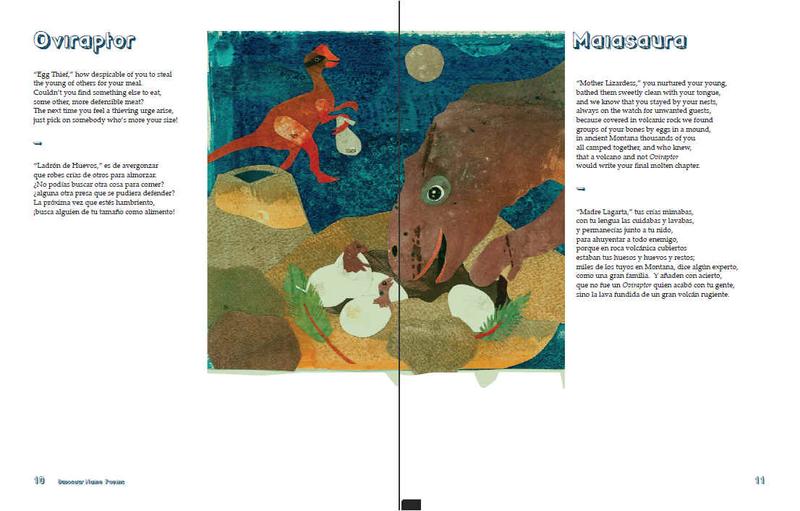
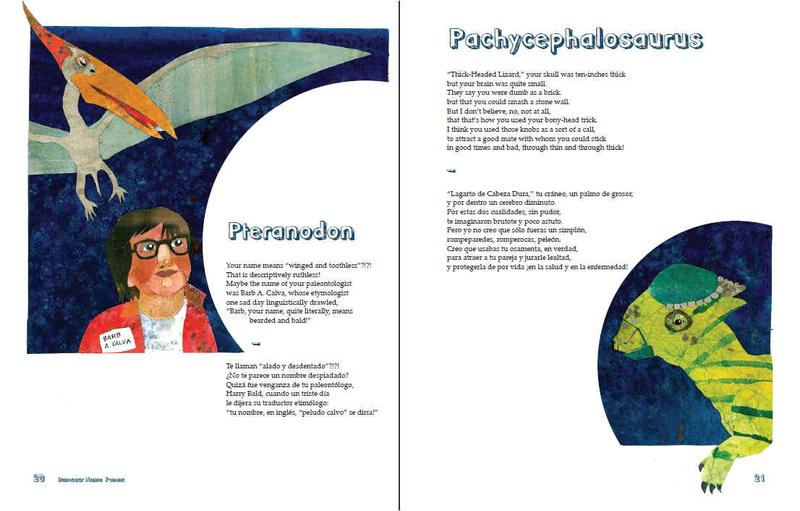
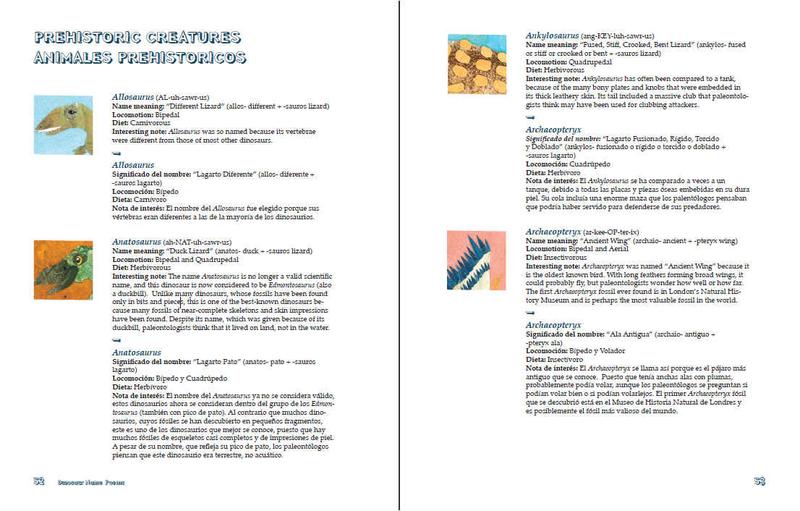
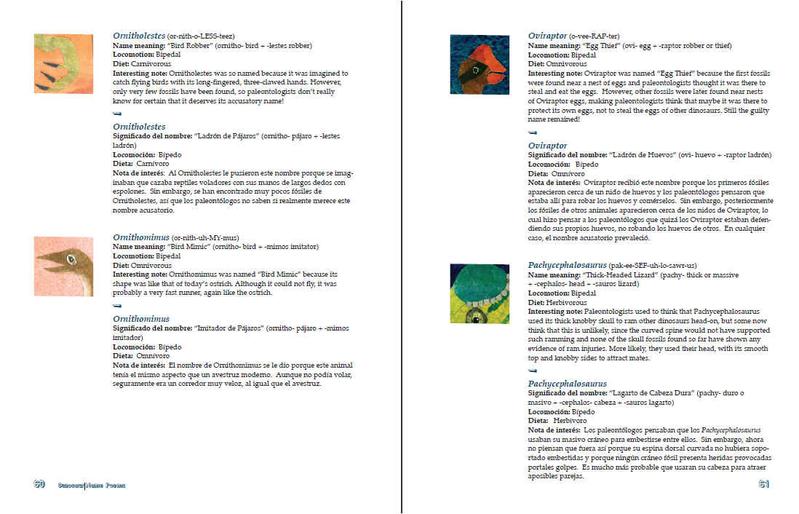
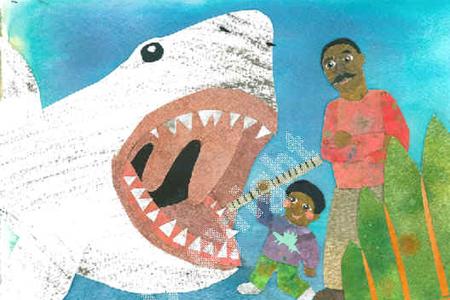
Your “giant tooth” was as big as my head
your giant jaws when wide-open spread
were as big as my Dad is tall
but with him by my side I’m not afraid at all.
Tu “diente gigante” como mi cabeza de grande,
tu mandíbula también, gigantesca se expande,
eres tan alto como mi Papá,
pero con él a mi lado, nada me pasará.
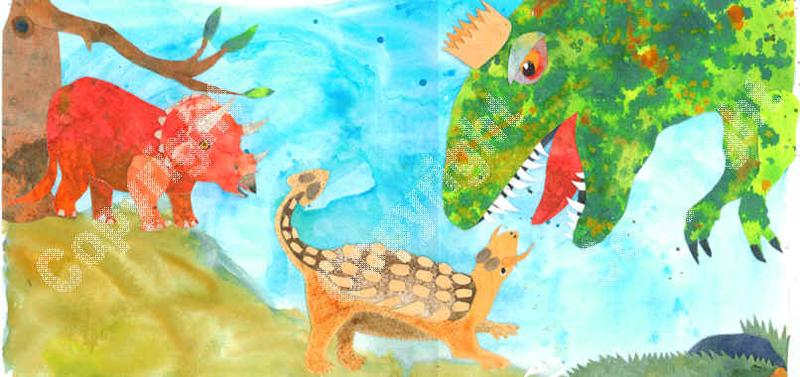
“Tyrant lizard king,” “Tyrant lizard king,”
No surprise that you no longer rule;
your royal name no longer do they sing,
for eating your royal subjects wasn’t very cool.
“Lagarto tirano rey,” “lagarto tirano rey,”
No me extraña que ya no impere tu ley;
tu real nombre ya nadie ensalza,
pues todos tus vasallos acabaron en tu panza.
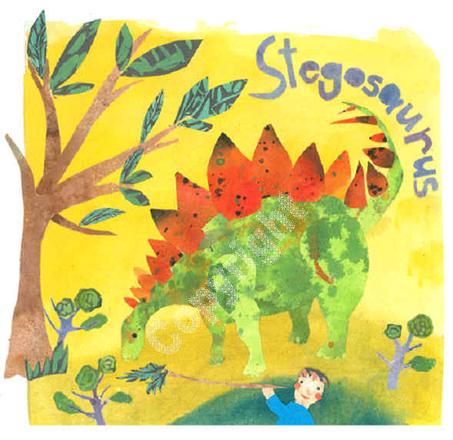
“Plated lizard,” I know that you’re an herbivore
and would not eat a child like me,
since you prefer the forest floor
and munching plants like broccoli.
“Lagarto con placas,” herbívoro eres
Y jamás me comerías a mí,
porque prefieres tus hierbas y flores
y el brócoli te hace feliz.
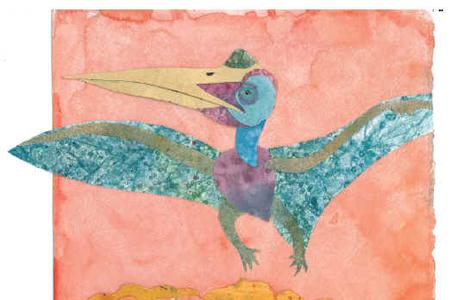
“Winged lizard,” fly to the skies,
I’ll meet you there after closing my eyes
and saying to the ground and the day
my last, sweet good-byes.
“Lagarto alado,” vuela alto hasta desaparecer,
tras una nube te imagino todavía,
y lamento a la tierra, al final del día,
cuánto me dolió no volverte a ver.
Also see more illustrations by Valeska Populoh, including early sketches, on Flickr.
Reviews
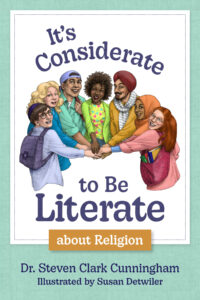
“Dr Cunningham’s book is an absolute must-read for all clinicians and educators. As we recognize the importance of providing care to all people with respect for diversity, equity, and inclusion, it is essential that respect for people’s religious or spiritual beliefs and values be respected and honored in their care. This book is engaging, thoughtful, scholarly, and practical.”
—Christina Puchalski, MD, OCDS, FACP, FAAHPM, Professor of Medicine and Health Science; Executive Director, The George Washington University’s Institute for Spirituality and Health (GWish)
“Practical and intelligent, this beautifully illustrated book offers many teachable moments. You are certain to broaden your religious literacy within its pages.”
—Rosemary Klein, former president of The Baltimore Ethical Society and founder of Three Conditions Press
“It’s Considerate to Be Literate about Religion effectively addresses a most timely issue today. Its thoughtful content, apt examples, and clear terminology are complemented with excellent illustrations which further enliven the text and emphasize its message.”
—Rev. John T. Grega, MA, STL, STM, ThM, Director of Religious Studies, Character, and Service,
McDonogh School (retd.)
“A learned, nuanced, and beautifully illustrated introduction to key concepts in religious studies. Dr. Cunningham offers a potent remedy for our cultural disease of viewing the world’s diverse religions in simplistic and reductive ways.”
—J. F. Alexander, MA, JD, author of the spiritual adventure novel I Am Sophia
“In this important book by Dr. Steven Cunningham, the author builds on his previous works that explore the intersection of poetry and nomenclature to help us see a topic in a new and unique light. In his current work, Dr. Cunningham masterfully uses ‘poemenclature’ to make religious literacy an approachable topic for a wide population. This book provides a broad welcoming overview of different religious world perspectives. It is a must-read for not only the young, but for people of all ages.”
—Timothy M. Pawlik, MD, PhD, MPH, MTS, MBA, FACS, FSSO, FRACS (Hon.), Professor of Surgery, Ohio State University; scholar of religion
“Dr. Cunningham’s contribution to the field of religious studies is creative, accessible, and informative. Most importantly, it addresses some of the most common misconceptions about religion and offers readers a more sophisticated and nuanced approach to understanding our diverse world.”
—John Camardella, College World Religion, Prospect High School; Education Fellow, Religion in Public Life Program, Harvard Divinity School
“Cunningham’s book is designed to promote religious literacy. Yet, its strength is in promoting curiosity, tolerance, dialogue, and understanding. He breaks down concepts in easy-to-understand language engaging the reader to want to learn more. He educates the reader through poetry, examples, and discussion. His ability to separate religion from the actions of persons who interpret their religion in violent ways is quite timely in promoting religious, cultural humility. This is an essential reader for youth, parents, all adults and particularly religious leaders who are uniquely positioned to promote healing and interfaith peace. The illustrations by Detwiler are excellent and add greatly to the book’s content.”
—Beth L. Muehlhausen, PhD, MDiv, BCC, LCSW; Sr. Researcher for Spiritual Care & Mission Integration, Ascension
“It’s Considerate to Be Literate about Religion is a fun, compassionate, and lyrical journey into religious diversity. With whimsical prose and beautiful illustrations, Cunningham offers kindhearted depictions of religious differences alongside his invitation to appreciate their common moral commitments. A must-have for childhood educators and families hoping to raise open-minded children!”
—Matthew W. Hughey, PhD, Professor of Sociology, University of Connecticut
“Dr. Cunningham’s wonderful book does us a double service—it explains convincingly the necessity of religious literacy and it shows us how to be religiously literate. It is a hopeful and informative text, no matter the reader’s religious point of view!”
—Rev. Christopher Dreisbach, PhD, Assisting Clergy, Old St. Paul’s Episcopal Church, Baltimore, MD; Professor (part-time) of Moral and Systematic Theology, St. Mary’s Ecumenical Institute of Theology
“As a high-school educator and mother of two, I cannot express how deeply important Cunningham’s book is to our children and their future. Increasingly so, we live in an ever-changing world with complex issues that often revolve around religion because religion is embedded in our culture, politics, and society. Using wit and humor, Cunningham lays the foundation of religious literacy in a way that is easy enough for a middle schooler to understand, but entirely appropriate for high-school-aged readers and older. The carefully organized pauses and reminders throughout the book allow any parent an opportunity to further discuss concepts or for a child to ask their own questions. I cannot wait to read this with my own children!”
—Jeanne Shin-Cooper, MA, CRSE, National-Board-certified high-school educator, and mother
“Dr. Cunningham goes right to the questions to be asking to understand and nurture relationships of all kinds in our complex and challenging world. Yet, in pairing poetic whimsy with informative prose, he leads readers to and through these questions with imaginations opened and defenses lowered. From my perspective as a parent, a priest, and simply a person seeking to live thoughtfully and lovingly in diverse community, this book is a gift: offering a way into conversation and self-reflection.”
—Rev. Jenni Ovenstone, MDiv, Sr. Associate Rector of St. Paul’s Episcopal Church, Alexandria, VA
“This beautiful and brief educational book is as well written in prose as it is in poetry. Its clear and respectful message regarding religious diversity and inter-religious literacy weaves in social and political considerations without compromising religious nuance and personal integrity. I wholeheartedly recommend this book to every middle and high schooler—in short to all our youth in America who will be the inheritors of a beautiful land rich in heritage with growing diversity.”
—Hasan Awan, MD, author of Islam of the Heart: Living Religion with Presence
“A well-crafted and imaginative book assisting students to understand and address one of the critical issues facing our multireligious and multiethnic world—religious illiteracy. The eloquent poems and case studies, skillfully integrated into the text, are brilliant!”
—Ali S. Asani, PhD, Murray A. Albertson Professor of Middle Eastern Studies, Professor of Indo-Muslim and Islamic Religion and Cultures, Harvard University
“As Steven Clark Cunningham says, being religiously literate helps us understand one another, which helps us live together more harmoniously. The wonderful poems and thoughtful examples in his book make it an excellent introduction to religious literacy.”
—George Fitchett, DMin, PhD, Professor, Department of Religion, Health & Human Values, Rush University Medical Center
“This book provides indispensable nuance, compassion, and empathy to how diverse people grapple with humanity’s enduring questions. It is a beautiful introduction to how we should orient ourselves around religious literacy and difference.”
—Benjamin Sax, PhD, Jewish Scholar, Institute for Islamic, Christian, Jewish Studies, Baltimore, MD
“Steve Cunningham provides his young readers with a detailed and clearly written introduction to religious literacy. He manages to give serious depths to the topic while keeping each section manageably short and precise while continuously drawing his audience in. Even a more experienced reader will find his book a well-balanced combination of carefully chosen examples and important background facts that are well illustrated.”
—Nina Redl, BCC, Chaplain, Bryan Medical Center, Lincoln, NE
“Now more than ever, religious literacy is needed in a world where ‘othering’ is far too common. Dr. Cunningham provides useful insights and a sense of playfulness to help readers gain insights that lead to understanding and move beyond mere tolerance: to curiosity, dialogue, and respect for religious difference. I highly recommend this book!”
—Rev. Ann Ritonia, MA, MDiv, Rector, St. John’s Episcopal Church, Ellicott City, MD
“It’s Considerate to Be Literate is a wonderful example of what religious literacy is and how it can be fostered. The approach is thoughtful and educational and the illustrations beautiful. Many will learn from it.”
—Wendy A. Cadge, PhD, Barbara Mandel Professor of the Humanistic Social Sciences, Professor of Sociology, Dean of the Graduate School of Arts & Sciences, Brandeis University
“An engaging primer on the role of religion in social life. Dr. Cunningham’s clear prose and clever poems make challenging concepts accessible to young readers—when’s the last time you read YA poetry about Ludwig Wittgenstein and the definition of ‘religion’?”
—Henry Goldschmidt, PhD, Interfaith Educator, New York, New York
“Wherever we find ourselves—in a classroom, a workplace, a neighborhood—we encounter the presence of religious diversity. In his book, Dr. Steven Cunningham reveals a key way to avoid conflicts and tensions in our relationships: by becoming familiar with and learning about religion, especially religions that are not our own. The examples in the book clarify the various points he brings. Knowledge develops respect, tolerance, and acceptance of the ‘other,’ exactly what our society needs now. Knowledge is power. I would recommend the book to anyone, no matter what age.”
—Rabbi Ziona Zelazo, BsC; Assoc. Chaplain, Valley Hospital, Ridgewood, NJ; Disaster Spiritual Care Provider for the American Red Cross
=================================================
“Dr. Steven Cunningham’s new book of poems about the human body, Your Body Sick and Well: How Do You Know? is loaded with humor, facts, and fancy, along with some whimsical color illustrations by Susan Detwiler. In addition to human anatomy, the poems reference diseases and doctor’s tools. Enjoy it!”
—Douglas Florian, author of Dinothesaurus (2009), a Kirkus Reviews Best Book of the Year, a Horn Book Fanfare List selection and a Junior Library Guild selection; Lizards, Frogs and Polliwogs (2005), a Bulletin Blue Ribbon Book; and Gryphon Award-winner and Parents Magazine Best Book of the Year Bow Wow Meow Meow (2003).
“Your Body Sick and Well: How Do You Know? is a perfect introduction into the complex world of organs, disease, and the tools needed for and diagnosing and treating many serious childhood conditions. Using playful poems and “Learn More!” sections on each page, Dr. Cunningham breaks down these topics in a way that children and their parents alike can understand. Susan Detwiler’s charming and clever illustrations further enhance and explain the text in ways that children can relate to. As a former neo-natal and pediatric nurse, now children’s book author/illustrator and mom to three children, I believe this book would make an excellent addition and resource for school classrooms, doctor’s offices, and any parent looking for books to explain these serious topics in a very child-friendly way.”
—Joan Waites, illustrator of What’s New at the Zoo? An Animal Adding Adventure and many other children’s books (2009) and recipient of the Teacher’s Choice Award, the Benjamin Franklin Award, and numerous others.
“This is an exciting and worthwhile addition to literature for kids, particularly if they spend a lot of time around medicine. The poems are fun to read and convey a lot of information. The “Learn More!” section on each topic is wonderful. The illustrations are lively, accurate, and often amusing.”
—Sue Poduska, Creator of GradeReading.net, a suite of blogs for reviews of children’s literature.
=================================================
“Beautiful illustrations and whimsical poems lead readers on a wonderful exploration of prehistory, all of which can be summarized by that all-important word: FUN. With Dinosaur Name Poems, Steven Cunningham has produced a delightful introduction to a host of prehistoric beasts! The illustrations are colorful and engaging, while a glossary and a section containing brief bios of the creatures closes the book perfectly. Also welcome is the inclusion of Spanish text throughout. As the scientific consultant for the book, I am more than proud to have my name associated with the final product.”
—Dr. Richard A. Kissel, paleontologist and Director of Teacher Programs at the Paleontological Research Institution of Ithaca, NY
“All of the poems have a great roll-along sound and bouncy rhythm, characterizing thirty dinosaurs from Allosaurus to Velociraptor as they play on the meaning of the etymology of the ancient animal’s name. This will unquestionably engage kids … Supporting the thirty poems are Valeska M. Populoh’s laugh-out-loud animated illustrations with their brilliant texture and wonderful palette of colors, notably red, green and blue that are well matched to the text.”
—Norm Goldman, Publisher & Editor of Bookpleasure (Full review at The American Chronicle)
“Colorful, artistic illustrations and a thoughtful text accompany each dinosaur poem. The book is a wonderful addition to any child or school’s collection.”
—Nancy Lewis, expert in early childhood education and author of Count-a-Saurus (Alladin, 1992)
“Thank you to Steven Clark Cunningham, for his boyhood soul and for bringing us, children and grown-ups alike, the fascinating world of our dinosaur friends. The pages in this book are filled with innocence, beauty, and wisdom – the wisdom of transforming poetry into adventure.”
—usana Oviedo, school teacher, Vitoria, Spain
“Stevosaurus Cunningham is a witty and entertaining writer who is keenly in touch with both dinosaurs and children and what they must think of each other. We bought 5 books with the intention of sharing, yet we have kept them all- for the car, diaper bag, nanny’s house, downstairs and upsatirs. My little girl loves the book!”
—Dr. Erica Sutton, clinical fellow, Minimally Invasive Surgery, University of Maryland
“I really like all of the poems and the artwork. I really like how the poems rhyme and how I learn something about dinosaurs from them.”
—Sophia Matricciani, grade-school-aged child
“A great introduction to etymology that will appeal to kids on several different levels.”
—Eloise Michael, Feathered Quill Book Reviews (Full review at the Feathered Quill)
Purchase
Buy via the publisher for 25% off for hardcover and paperback
Support local bookstores: Buy on Bookshop.org
Buy at Amazon
Support local bookstores: Buy on Bookshop.org
Buy at Amazon
Support local bookstores: Buy on Bookshop.org
Buy at Amazon
Media Kit
Media Kit for Steven Clark Cunningham, MD.
Please feel free to contact me directly for any additional images, text, etc.
Thank you!
– Steve Cunningham
Contact
Poetry Contact Form
Discussion Guide
Topics and Questions for Further Discussion
To accompany It’s Considerate to Be Literate about Religion: Poetry and Prose about Religion, Conflict, and Peace in Our World
Download a printable version of the Discussion Guide here.
Summary and Reading Comprehension
- The author describes five aspects of religious literacy. What are these, in your own words?
- On page 5, the author says that these aspects are consistent with the notion of religious literacy endorsed by the American Academy of Religion (AAR), but that there are other notions of religious literacy, and he gives an example. What is this example, and how is it different from the AAR notion of religious literacy? How do you think these two notions of religious literacy are different and similar? What are the pros and cons of each type?
Aspect #1: Distinguishing Inside versus Outside
- The author talks about the difference between engaging with religion from what he calls “the inside” versus “the outside.” How, in your own words, are these two ways of engaging with religion different from each other?
- Assuming that the author’s claim is true – that everyone engages with and interacts with religion, since religion is so deeply embedded in all aspects of human life – do you engage more from the inside or more the outside?
- How is the author engaging with religion while writing this book, from the inside or from the outside?
Aspect #2: Recognizing That Religions Are Internally Diverse and Dynamic
- As you think of your own worldview or faith tradition, be that a particular religion or no particular religion, what are some of the differences you see among others who share in that “same” worldview or tradition?
- Think of other people you know well, who have a different faith tradition or worldview than yours; do you perceive any similarities or differences among them?
- On page 48, the author describes the danger of what Chimamanda Ngozi Adichie has called the “single story.” In your own words, what does she mean by “the single story”? How is it related to Aspect #2 and Aspect #1?
- Why is the “single story” dangerous?
- Can you think of any other examples of a “single story”?
Aspect #3: Actors with Agency
- What does the term “an actor with agency” mean, in your own words?
- In what small ways have you employed your agency recently? What are some ways that you think that you should do so in the future?
Aspect #4: Appreciating Religious Influences
- What are some obvious ways that religious influences exist in public life?
- Can you think of any more subtle ways that religion influences public life?
- Can you think of any ways that religious influences promote community and acceptance within society, or divisiveness and discord?
Aspect #5: Situatedness
- One of the main tenets of religious literacy described in the book is recognizing our situated perspectives. What do you think is the situatedness of the author himself? The illustrator?
- What is your situatedness regarding religion?
- On page 11, the author refers to Donna Haraway’s term “the god trick.” What is “the god trick,” and have you ever thought that you could pull it off?
Peace and Violence
- What are the three types of violence (and peace) described in the book?
- What, in your own words, is the difference between these three types?
- How many examples can you find in the book of situations in which all three types are at work?
- Have you ever seen or experienced any of the three types of violence or peace? Have you ever initiated any of the three types of violence or peace?
- The book describes several conflicts around the world, such as in Syria, Myanmar, and Israel. What is happening in current events in these or other countries that is relevant to this book? Can you think of anything that is happening in the US right now that is relevant for these questions of peace and violence?
- In the section on Nigeria, the author (and the video mentioned on page 43) describes how Pastor James and Imam Ashafa overcame their differences to come to work together in an interfaith approach to dealing with the conflict in their country. What are some conflicts that you have experienced personally, and how did you resolve them, or transform them into something better? What are some of the things that help or hinder people in the process of conflict resolution or conflict transformation?
- The author says that neither peace nor violence is inevitable. What do you think that means?
Scripture
- In the section on scripture, does the way that the author describes the development of scripture surprise you? How does this description of scripture make you feel about your own relationship with scripture?
- The illustration on page 22 shows a fragment of ancient Greek (this particular text from the Bible’s New Testament chapter 1 Timothy 3:16, in which Paul records a hymn about the mystery of godliness being manifest in the flesh: :”ΜΥΣΤΗΡΙΟΝ ΟΣ ΕΦΑΝΕΡΩΘΗ ΕΝ ΣΑΡ…” (“mystery revealed/manifest in fles…”). What are some possible reasons why the author chose that particular fragment?
- Similarly, in the section on the Holocaust, the author gives an example of how one particular story – the story of Jesus being sentenced to death – changes over time. How does this description compare with what you already knew about his sentencing? How does it make you feel?
Religious Icons
- Regarding the religious icons at the beginning and end of the book, and at the top and bottom of each page, the author does not discuss them, but can you think of any reason that they are in that particular order?
- Can you think of any reason that there more icons for some religions than others?


